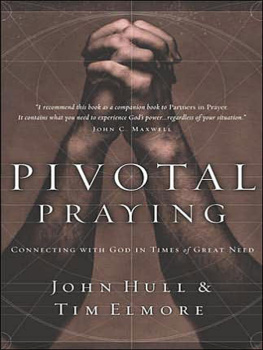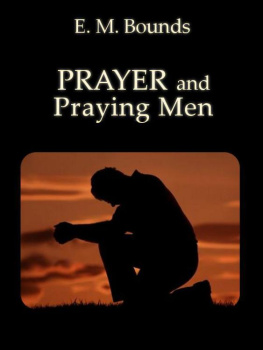Praying the Hours

Praying
the
Hours
Suzanne guthrie

Published by Cowley Publications
An imprint of Rowman & Littlefield Publishers, Inc.
A wholly owned subsidiary of The Rowman & Littlefield
Publishing Group, Inc.
4501 Forbes Boulevard, Suite 200
Lanham, MD 20706
Estover Road, Plymouth PL6 7PY, United Kingdom
Distributed by National Book Network
Copyright 2000 by Suzanne Guthrie
All rights reserved. No part of this publication may be reproduced, stored in a retrieval system, or transmitted in any form or by any means, electronic, mechanical, photocopying, recording, or otherwise, without the prior permission of the publisher, except by a reviewer who may quote passages in a review.
Library of Congress Cataloging-in-Publication Data
Guthrie, Suzanne, 1951
Praying the hours / Suzanne Guthrie.
p. cm.
ISBN-13: 978-1-56101-177-3
1. Meditations. I. Title.
BV4832.2 . G86 2000
242dc21
Scripture quotations are from the New Revised Standard Version of the Bible, 1989 by the Division of Christian Education of the National Council of the Churches of Christ in the USA. Used by permission. All rights reserved.
Cover and interior design by Vicki Black
Cover photograph: Madonna lily, the Cuxa Cloister Garth
Garden, Manhattan, New York, 1990 Sam Abell
Printed in the United States of America.
 The paper used in this publication meets the minimum requirements of American National Standard for Information SciencesPermanence of Paper for Printed Library Materials, ANSI/NISO Z39.48-1992.
The paper used in this publication meets the minimum requirements of American National Standard for Information SciencesPermanence of Paper for Printed Library Materials, ANSI/NISO Z39.48-1992.
To Bill Consiglio,
with whom I live in sacred time and place
Processu vero conversationis et fidei,
dilato corde inenarrabili dilectionis dulcedine
curritur via mandatorum Dei.
(Prologus:49, Regula Sancti Benedicti)

Table of Contents

Acknowledgments
The meditations in this book have been presented as retreat material at Holy Cross Monastery in West Park, The Community of the Holy Spirit in Manhattan, Yale Divinity School in New Haven, and the Benedictine Experience at the Bishops Ranch in Healdsburg, California.
I wish to thank Robert Sevensky OHC, Jean Campbell OSH, and Randy Horton, Hermit, for advice and the loan of books. I thank the Camaldolese Benedictines for time at the hermitage and use of their monastic library, especially Robert Hale OSB Cam., Cyprian Consiglio OSB Cam., and Bernard Massicotte OSB Cam. for materials I would not have been able to find or use without their help.
Thank you, Linda Duval, Anne Kitch, Kathy Still, and especially Linda Fite and Sister lise CHS who read and corrected the manuscript. Thank you, Bill, willing to translate Latin to English at any holy or unholy hour of the day or night.
Thank you, brothers at Holy Cross Monastery, with whom I worship, and sisters of The Community of the Holy Spirit, who offer me hospitality and spiritual direction.
I thank all my brothers and sisters in monastic life who share stories, time, humor, and the joys and sorrows of life with me.
I also thank the always supportive and patient Cynthia Shattuck and the staff at Cowley Publications.

Prologue
Rejoice always, pray without ceasing, give thanks in all circumstances; for this is the will of God in Christ Jesus for you.
1 Thessalonians 5:16-18
When I was eleven years old I was given my own copy of The Book of Common Prayer. The white leather prayer book fit perfectly in my hands, and my name was embossed in gold on the cover. I loved my prayer book, and kept it on the nightstand. I prayed every day on my knees next to my bed. Saying the beautiful prayers made me happy, and I sensed the sacred phrases shaping my unformed soul.
At the age of twenty-two I read The Autobiography of St. Teresa of Avila, Teresas sixteenth-century account of an adventurous journey of prayer. Her humor, integrity, and richness of soul inspired me to renew my own life of prayer. I sought out spiritual direction and began to study the writings of Teresa of Avila, John of the Cross, and other Christian mystics. That same year I also began theological studies at a Roman Catholic seminary, taking advantage of the open, ecumenical spirit of the post-Vatican II church. Most of my classmates and friends were in religious orders and we often talked about prayer. Although I began my studies by concentrating in the Bible, I found myself drawn more and more to spirituality, prayer, and Christian mysticism.
So I have prayed, worshiped, and studied in monastic houses of different kinds the whole of my adult life. Since the morning and evening worship services of The Book of Common Prayer are based on the sevenfold offices of ancient monastic prayer, monastic worship offered a spiritual continuity I have taken for granted all these years, even as a married woman with four children. Praying the same prayers I loved as a child in my house with monks and nuns in their houses seemed naturalprayers as familiar as the tissue-thin pages of the little white prayer book that shaped my soul. The daily rhythms of monastic prayer became a part of my own conscious habit of prayer.
The first thing I ever learned about praying was the importance of finding a certain time and a specific place for prayer. Your soul then becomes alert in anticipation, just as your stomach does if you eat at noon every day. Praying in a certain time and place establishes a habit of prayer at the heart of your day and in your surroundings, or, as my friend Sister lise describes it, a way the Holy Spirit may find you ready every day.
Seven times a day do I praise you (Psalm 119:164). Knowing full well that seven is a mystical number meaning at all times, St. Benedict prepared seven prayer offices for his monks to say during waking hours. The monks were to drop whatever they were doing at the sound of the bell and go with haste to the chapel to pray Matins, Lauds, Terce, Sext, None, Vespers, and Compline. But as later Benedictine commentators would affirm, the seven times were an outline of prayer, pillars of a bridge thrown across the stream of time.
Today traditional monks and nuns may also file into the chapel several times a day for the prayer offices, but the offices they recite simply connect the between time by means of mutual community prayer. What about the rest of time? And what about those of us who do not live with others who pray habitually through the day? How can we rejoice always, as St. Paul tells us, and give thanks in all circumstances?
For me, being mindful of the presence of God in daily life requires devotional practices that can be folded into the times of a hectic day and accompany me throughout my daily travels. Eating, sleeping, and even dusting the house have to lift my heart to God. The Holy Spirit must find me not only at home but at work, running errands, and in all the settings of my erratic schedule.
While most of us cannot stop work to say a prayer office seven times a day, at least thinking about the holy hours can provide a method for remembering the presence of God in daily life. The ancient sevenfold pattern of monastic prayer provides a framework for praying continually. If I begin by remembering and praising God seven times a day, perhaps seven will break through and become seven mystically. Then I will pray at all times and in all circumstances. My own tradition gives me those pillars of a bridge of prayer arching through the hours of my waking and my sleeping.
Next page

![The Standing Commission on Liturgy and Music - Daily Prayer for All Seasons [English Edition]](/uploads/posts/book/411072/thumbs/the-standing-commission-on-liturgy-and-music.jpg)








 The paper used in this publication meets the minimum requirements of American National Standard for Information SciencesPermanence of Paper for Printed Library Materials, ANSI/NISO Z39.48-1992.
The paper used in this publication meets the minimum requirements of American National Standard for Information SciencesPermanence of Paper for Printed Library Materials, ANSI/NISO Z39.48-1992.